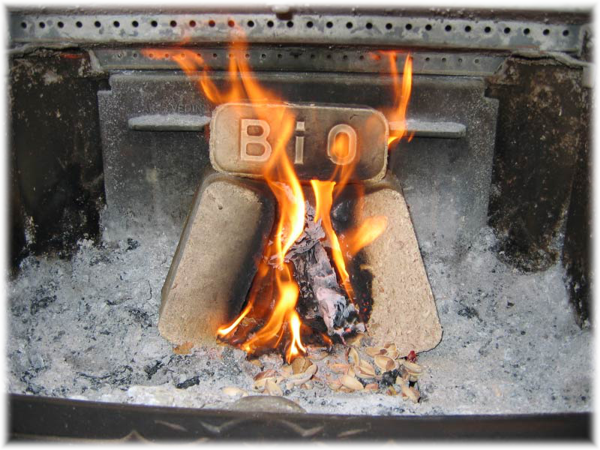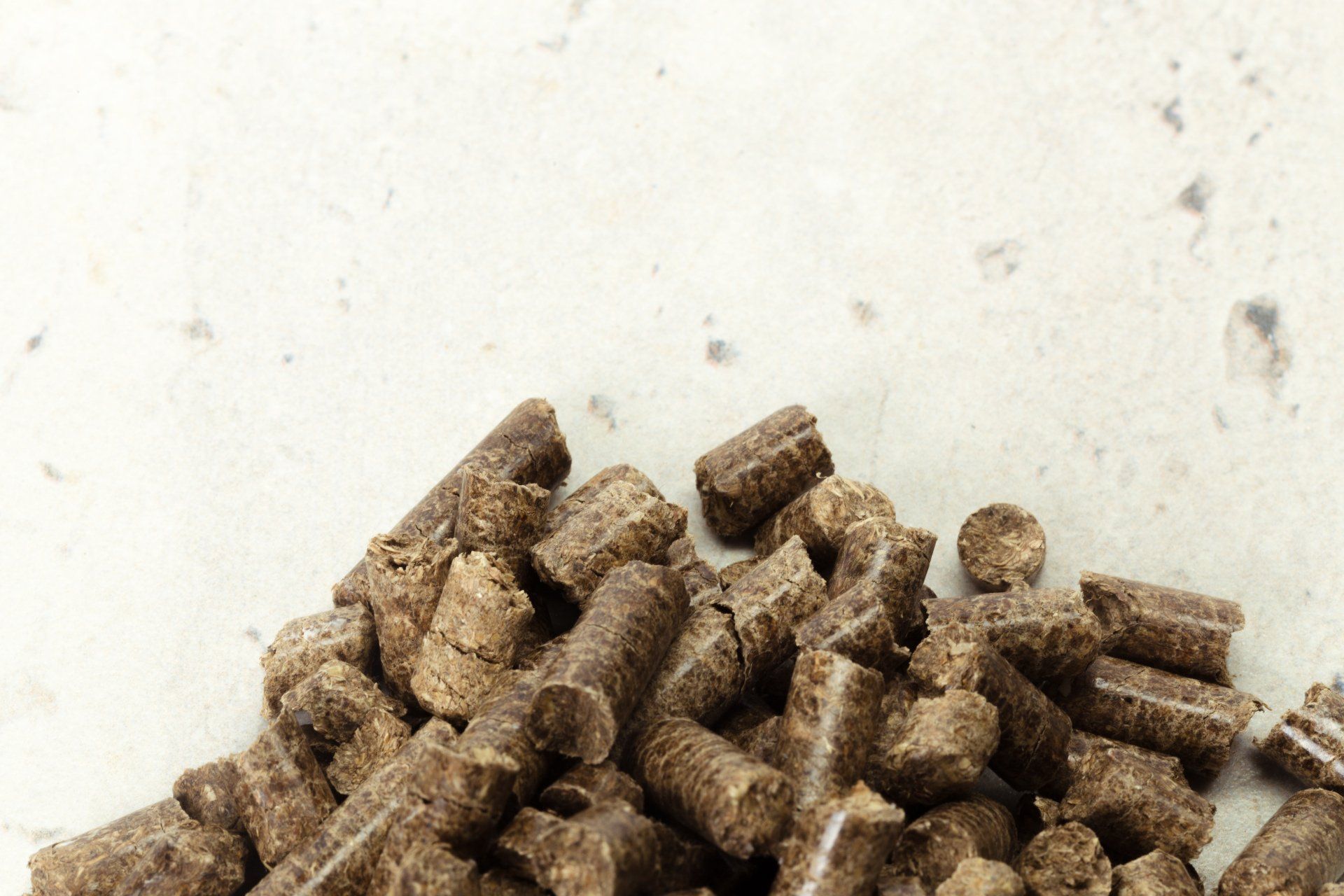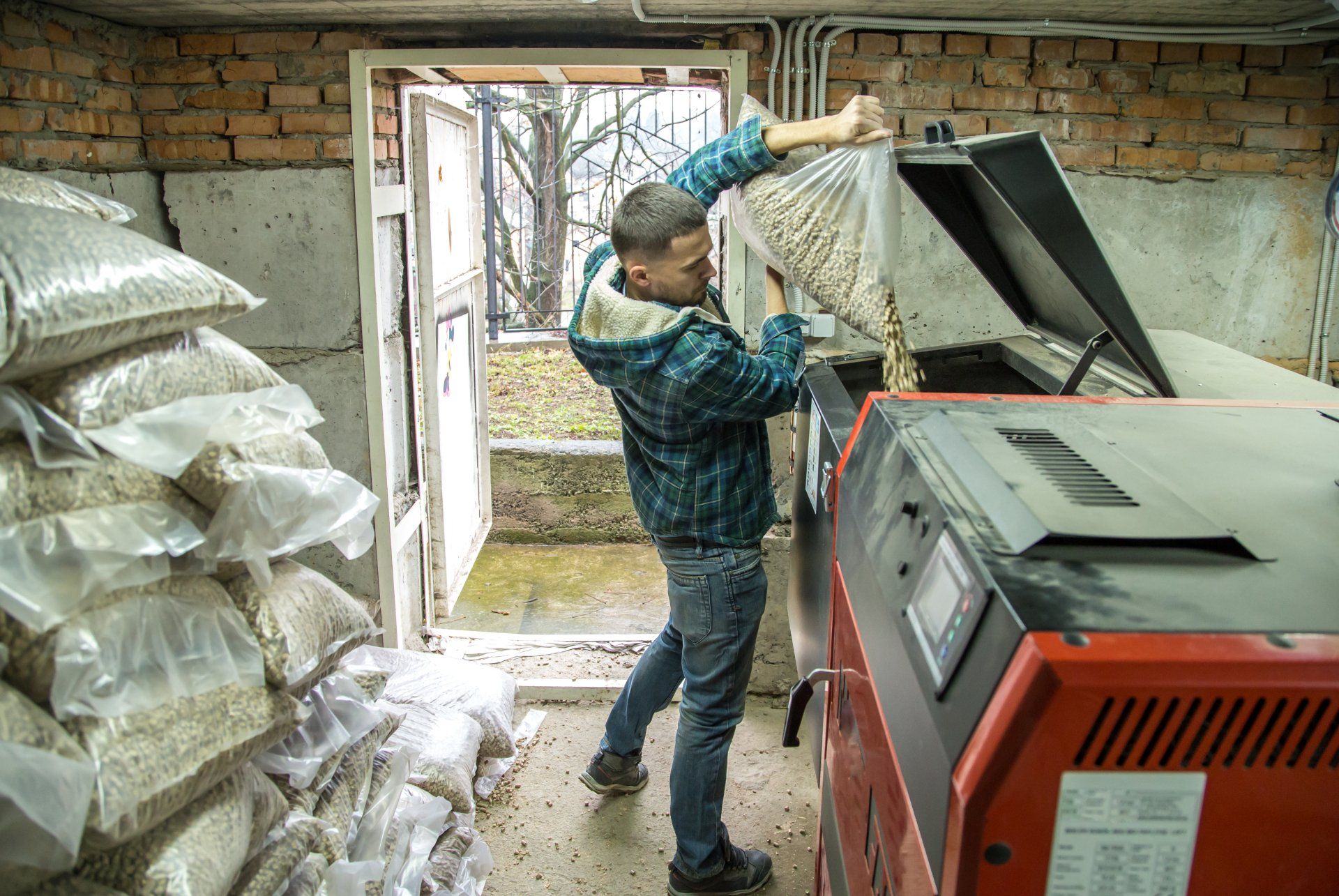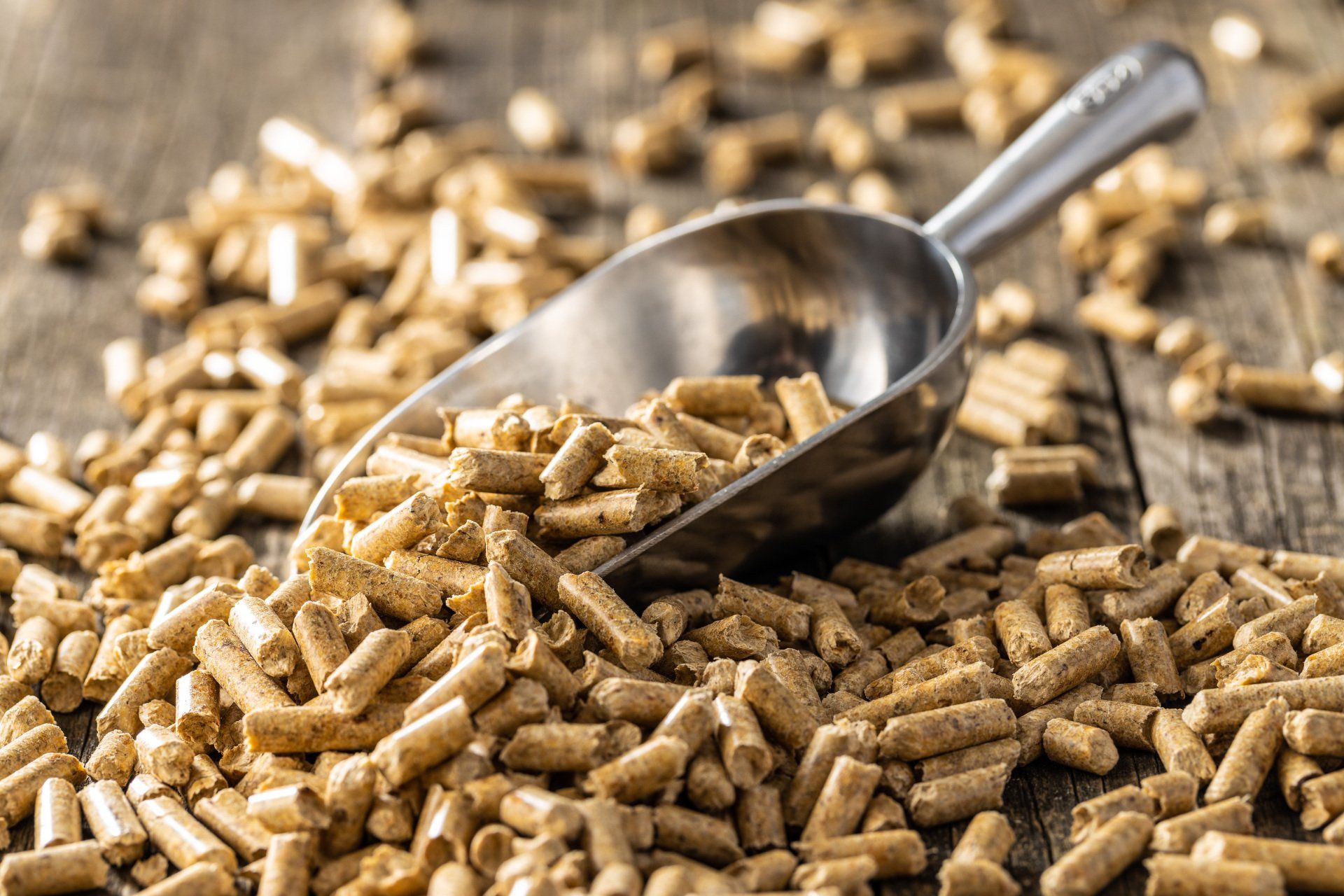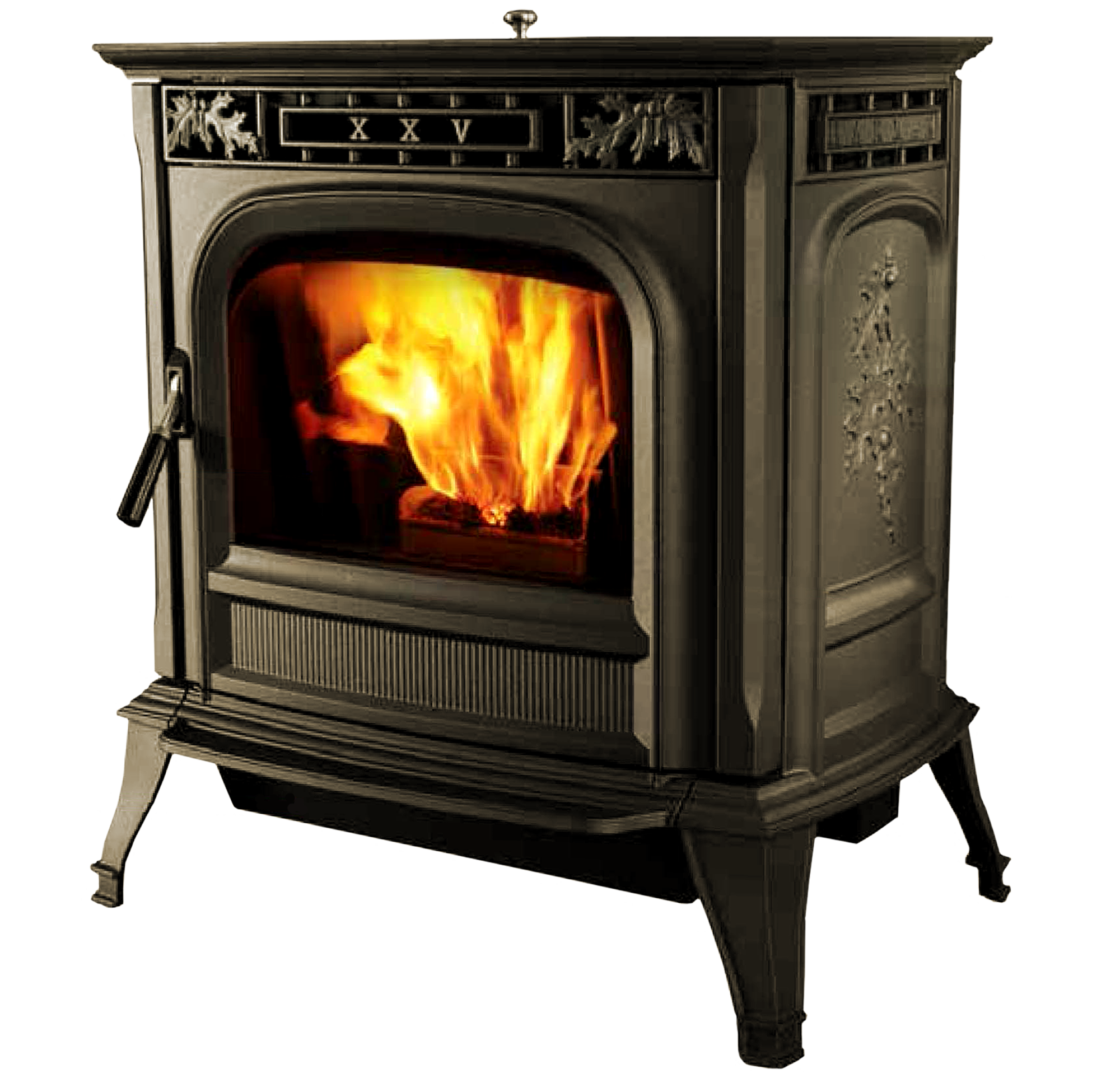Energy-saving Wood and Pellet Heating: Part 1
Department of Energy Talks About Burning Wood &
Wood Pellets For Heating: Part 1
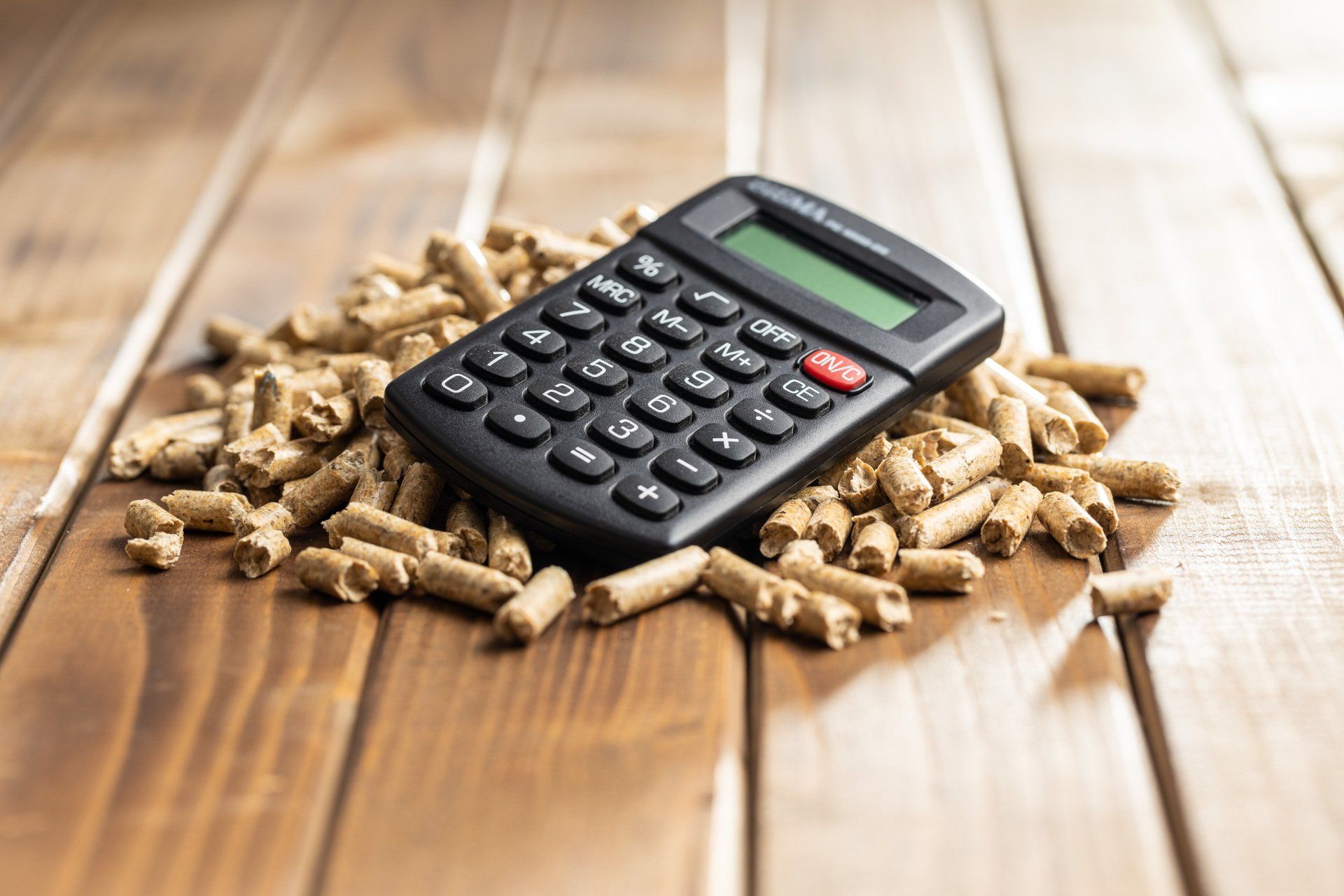
Modern wood- and pellet-burning appliances are powerful enough to heat many average-sized, contemporary homes while also burning cleaner and more efficiently. Appliances that use pellet fuel burn tiny pellets, which range in length from 3/8 to 1 inch.
Appliance Selection and Installation for Wood and Pellet Burning
It's crucial to pick a wood- or pellet-burning appliance that is the right size for the area that needs to be heated. Residents frequently burn fires at a low smolder to avoid overheating when an item is too big, which wastes fuel and is one of the main causes of air pollution. A unit that is too small won't produce enough heat. You should talk to a reliable dealer about your heating requirements. A decent generalization is that a stove with a 60,000 Btu rating can heat a 2,000 square foot house, whereas a 42,000 Btu stove can heat a 1,300 square foot area.
Large amounts of air pollutants may be released by wood-burning stoves and fireplaces. Numerous chemical substances found in wood smoke, including nitrogen oxides, carbon monoxide, organic gases, and particulate matter, are harmful to human health. Smoke from wood burning is a major cause of air pollution in many urban and rural regions. As a result, when the local air quality deteriorates, several localities ban the use of wood heating appliances. Others impose limitations or outright bans on the installation of wood-burning appliances in new buildings. Before establishing a wood-burning system, you should inquire about any local wood-burning laws with your state's energy office, environmental agency, or department of building codes.
Consider replacing your outdated wood-burning appliance with a more recent model that has been approved by the US Environmental Protection Agency (EPA). Some have a catalytic combustion device that enables combustion gases to burn at lower temperatures, cleansing the exhaust gas while producing more heat. An EPA certification sticker should be present on every woodstove sold today. Because complete combustion helps to prevent a buildup of combustible chimney deposits known as creosote, higher-efficiency appliances typically produce lower emissions and are frequently safer.
How efficiently heat is delivered and preserved in your home will depend on where the appliance (and chimney) are located. Place the majority of wood- and pellet-burning appliances—which are effectively space heaters—in the room where you spend the most of your time. The ideal heating system would have a fan or blower assembly to distribute heat throughout the remainder of the house.
You should think about having your wood- or pellet-burning equipment installed by a professional for safety and to enhance efficiency. A specialist will thoroughly inspect everything, including your floor protection and chimney. A licensed expert can also assist you in selecting the ideal heating appliance for your residence. The National Fireplace Institute keeps a roster of qualified business people.
Appliances that Burn Wood and Pellets
The various kinds of appliances that are available are briefly described in the section below.
Fireplaces and fireplace inserts with high efficiency:
Traditional open masonry fireplaces should not be regarded as heating sources because they are mainly for decorative purposes. For combustion, traditional fireplaces pull in up to 300 cubic feet per minute of heated room air, which is then sent directly up the chimney. Additionally, fireplaces significantly pollute the air. Most conventional fireplaces are still energy losers, despite the fact that some fireplace designs attempt to solve these problems with dedicated air supply, glass doors, and heat recovery systems. You ought to lower or turn off your heat when burning a fire, and you ought to open a window close to the fireplace.
Older fireplaces can now provide more heat with the help of high-efficiency fireplace inserts. The inserts essentially perform the same functions as wood stoves, using the existing chimney and fitting into the brick fireplace or onto its hearth. A properly installed fireplace insert can operate almost as effectively as a wood stove.
According to studies, it's crucial to install fireplace inserts properly. Have a qualified installer check the fireplace and chimney to see if they can accommodate an insert. It is best if inserts are airtight. The easier it is to control the fire and heat output, the more airtight it is. Any gaps between the fireplace mouth and insert shield should only be filled by the installation using certified fireplace insulating materials.
Moving an insert to clean the chimney or liner might be challenging; it's better to leave this task to a qualified chimney sweep. In certain circumstances, a clean-out door can be added above the insert connection to reduce the frequency of insert movement. Some types come with wheels to make assembly, maintenance, repairs, and other changes easier.
Some contemporary fireplaces are approved as low emission appliances and have heating efficiency that are comparable to those of wood stoves. This generation of fireplaces can efficiently offer heat in addition to the benefits of a traditional fireplace, while being built to incorporate such benefits. Room air is pulled into the firebox through vents, heated in a heat exchanger, and then returned to the house by vents at the top of the fireplace or ducts leading to close by rooms. Some of these fireplaces are permitted to send warm air to an auxiliary fan in the basement. The air is then transported to different areas of the house via ducts. A dedicated source of outdoor air should be available for combustion in the fireplace.
Flues let warm, heated air escape from your house. Plug and seal the flue if you have a fireplace that isn't being used. Be sure to close the flue when the fireplace isn't in use if you utilize one. To prevent air leakage via the flue and temporarily seal the chimney, you might alternatively use an inflatable stopper, which is readily available in stores.
Fireplace Heaters
Other names for masonry heaters include "Russian," "Siberian," and "Finnish" fireplaces. Compared to other wood- or pellet-burning appliances, they produce more heat while emitting less pollutants. Masonry heaters are constructed of a firebox, a sizable masonry mass (such as bricks), and numerous, intricately curved smoke tunnels. Their fireboxes are lined with materials that can withstand temperatures of exceeding 2,000°F (1,093°C), such as firebrick, refractory concrete, or comparable materials.
Once or twice a day, a tiny hot fire is constructed to release warm gases into the extensive brick heat tunnels. Over the course of 12 to 20 hours, the heat is gently released into the house through the masonry, which first absorbs it. Masonry heaters frequently achieve a 90% combustion efficiency.
The majority are made to burn wood, although traditionally they could burn nearly any kind of solid fuel. Very little air pollution and creosote buildup in the chimney are also caused by the relatively tiny yet powerful fire. This sort of heater does not require fuel loading as frequently as other types of wood heating appliances because the majority of the heat from the fuel is transmitted to the brickwork and released gradually into the room throughout the day. A brick heater will also absorb the sun's heat and slowly release it into the room if it is constructed in a location where sunlight may shine directly on it in the winter.
There are numerous masonry heater types and styles to choose from. Larger models can fill an entire wall and imitate traditional fireplaces. The size of smaller variants is comparable to that of a wood or pellet stove. They are available as prefabricated units or as custom-built items. Large designs might run you $5,000 or more. There are plans and kits available, but they are difficult DIY projects that call for masonry expertise.
In comparison to traditional wood stoves and fireplaces, brick heaters have one big drawback in addition to being more expensive: they cannot produce heat fast from a cold start.
Appliances Using Pellet Fuel
Appliances that use compressed pellets for fuel are often built of wood, but they can also be made of other organic materials. Some types can burn little wood chips, corn kernels, and nutshells.
Compared to regular wood stoves or fireplaces, pellet fuel appliances are easier to use and can have much higher heating and combustion efficiencies. As a result, they contribute very little to air pollution. In actuality, the cleanest solid fuel home heating appliance is the pellet stove. The efficiency range for pellet stoves that have received EPA certification is estimated to be between 70% and 83%. Pellet stoves may produce between 8,000 and 90,000 Btu of heat per hour. Both residences and apartments or condominiums can use them.
Most pellet stoves range in price from $1,700 to $3,000. However, installing a pellet stove is frequently less expensive than installing a traditional wood-burning heater. Many do not require a pricey chimney or flue and can be directly vented to the room. As a result, the overall system's installation price may be less than the price of a traditional wood stove.
There are freestanding stoves and fireplace inserts that use pellet fuel as an energy source. In that they often heat a single room well, but not adjacent rooms unless they have a blower to pump the warm air into those other places, freestanding units are similar to conventional wood heaters. Inserts for pellet stoves fit inside of existing fireplaces. Pellet-fired furnaces and boilers are currently produced by a number of firms to replace or supplement gas- or oil-fired furnaces and boilers in domestic space heating systems.
Every appliance that uses pellet fuel has a fuel hopper where the pellets are kept until they are needed for burning. The majority of hoppers store between 35 and 130 pounds (16 and 60 kilograms [kg]) of fuel, which, under typical working conditions, is enough to last a day or longer. Several pellets at a time are dropped into the combustion chamber by a feeder device, resembling a big screw, for burning. The amount of heat produced depends on how quickly pellets are fed to the burner. A tiny flue pipe that can be pointed through a sidewall or upward through the roof is used to vent the exhaust gases. Modern variants control the pellet feed rate with a small microprocessor and thermostat.
Typically, just one daily refueling is necessary for pellet appliances. The compressed fuel makes the bagged pellets, meanwhile, challenging to lift. Some designs employ fully automatic bulk-filled storage systems.
The majority of the exteriors of pellet appliances (apart from glass doors) remain reasonably chilly while in use, lowering the possibility of unintentional burns. Because pellet burners burn fuel so thoroughly, relatively little creosote accumulates in the chimney, reducing the risk of a fire.
Pellet appliances are unfortunately more complicated and have pricey parts that can fail. Additionally, they must be cleaned annually by a professional and weekly by the homeowner. They also need electricity to power pellet feeders, controllers, and fans. They use roughly 100 kilowatt-hours (kWh) of electricity every month, or $9, when used normally. If the stove doesn't have a backup power source, the loss of electric power leaves it without heat and may even cause some smoke.
We here at Pellets Now would like to thank the Department of Energy for such a great reference. To read their article and learn more please visit their website at https://www.energy.gov/energysaver/wood-and-pellet-heating .
FIND US
CONTACT US
Address: 2280 Memorial Drive,
St. Johnsbury, VT 05819
Mailing Address: P.O. Box 4031, St Johnsbury, VT 05819
Email: info@pelletsnow.com
Phone: 802.748.0827
Toll Free: 800.564.9928
Fax: 802.748.0825
